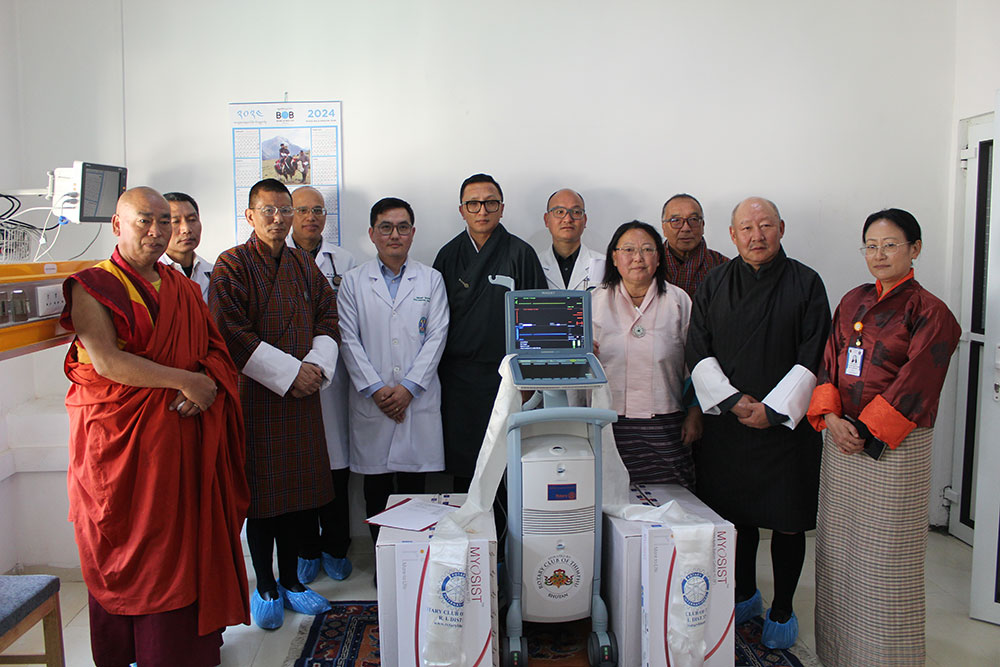Jigmi Wangdi
In September last year, something big happened at the JDWNRH: they opened the first-ever Cath Lab along with the Heart Centre. In just seven months, this Cath Lab has been doing wonders for patients with heart problems.
To boost the Cath Lab’s services, the Rotary Club of Thimphu pitched in by donating Intra-Aortic Balloon Pumps (IABP).
These pumps are like helpers for a struggling heart. They pump in extra oxygen to keep the heart ticking as smoothly as possible.
Tsewang Rinzing, president of the Rotary Club of Thimphu, said that they’ve been working on getting the IABP since 2017. Unfortunately, due to the pandemic, they couldn’t make it happen until now.
“We are hopeful that the IABP will be effective in treating patients here at JDWNRH. We will also work towards donating more equipment in the future, along with training health workers,” said Tsewang.
He added that the project got help from Rotary Clubs in Germany and Denmark. As part of this project, seven nurses and two doctors will go to Calcutta for a week to learn how to use the IABP and help train other health workers.
In the past, the Rotary Club of Thimphu has given various equipment to help, like dialysis machines, laser tools for treating cancer, and oxygen concentrators. They’ve also trained health workers. Altogether, their donations and training have been worth about Nu 130 million.
How will IABP help patients with cardiovascular diseases?
Before the Cath Lab was set up, the number of people being sent elsewhere for heart problems increased from 2016 to 2023. Each year, over 100 patients needed these referrals, and more than 80 percent of them needed Cath Lab services.
JDWNRH’s interventional cardiologist, Dr Mahesh Gurung, said that this situation has changed. “Before the Cath Lab, we used to send about 15 to 20 patients to India every month. Now, it’s down to only three to four cases. We only send complex cases, like those needing open-heart surgeries, to India.”
Dr Mahesh Gurung said that the IABP is crucial in the Cath Lab because it can be a lifesaver for patients, ensuring their survival.
“This machine helps the heart when it’s not working well. It works like a balloon going into an artery, puffing up and then going down, which takes some of the pressure off the heart. Dr. Mahesh said it’s a machine that will make the care we give at the Heart Centre better, “ he said.
Patients who could benefit from the IABP include those with weak hearts and complications like acute valve leakage.
“We’ve encountered a few patients with such conditions since the Cath Lab opened. Out of approximately 200 procedures performed, in about 100 cases, we had one patient who required the machine but we didn’t have it available at the time. Instead, we treated her with medications,” said Dr Mahesh Gurung.
He added that around 10 to 15 patients might need the services of the IABP, emphasising that while the machine may not be needed regularly, when it is required, it can greatly improve the patient’s chances of survival.
The Cath Lab has performed procedures like angioplasty and angiograms. Additionally, it has expanded the services offered to people who have had heart attacks.
By mid-2025, the Cath Lab aims to assemble a team for open-heart surgery, which will enhance the services offered at the heart centre.


